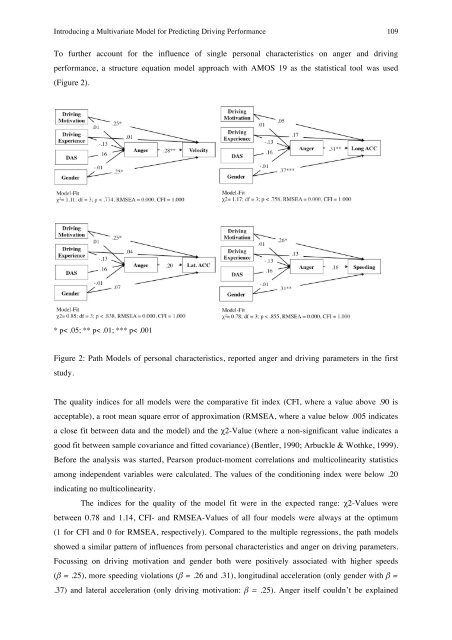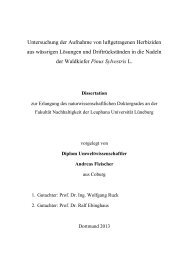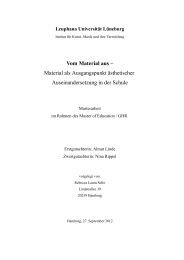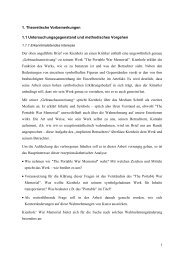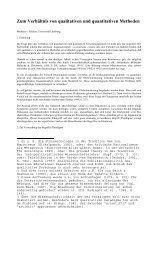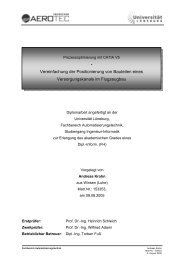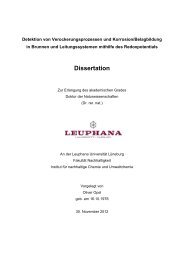Determinants of Emotional Experiences in Traffic Situations ... - OPUS
Determinants of Emotional Experiences in Traffic Situations ... - OPUS
Determinants of Emotional Experiences in Traffic Situations ... - OPUS
Create successful ePaper yourself
Turn your PDF publications into a flip-book with our unique Google optimized e-Paper software.
Introduc<strong>in</strong>g a Multivariate Model for Predict<strong>in</strong>g Driv<strong>in</strong>g Performance 109<br />
To further account for the <strong>in</strong>fluence <strong>of</strong> s<strong>in</strong>gle personal characteristics on anger and driv<strong>in</strong>g<br />
performance, a structure equation model approach with AMOS 19 as the statistical tool was used<br />
(Figure 2).<br />
* p< .05; ** p< .01; *** p< .001<br />
Figure 2: Path Models <strong>of</strong> personal characteristics, reported anger and driv<strong>in</strong>g parameters <strong>in</strong> the first<br />
study.<br />
The quality <strong>in</strong>dices for all models were the comparative fit <strong>in</strong>dex (CFI, where a value above .90 is<br />
acceptable), a root mean square error <strong>of</strong> approximation (RMSEA, where a value below .005 <strong>in</strong>dicates<br />
a close fit between data and the model) and the χ2-Value (where a non-significant value <strong>in</strong>dicates a<br />
good fit between sample covariance and fitted covariance) (Bentler, 1990; Arbuckle & Wothke, 1999).<br />
Before the analysis was started, Pearson product-moment correlations and multicol<strong>in</strong>earity statistics<br />
among <strong>in</strong>dependent variables were calculated. The values <strong>of</strong> the condition<strong>in</strong>g <strong>in</strong>dex were below .20<br />
<strong>in</strong>dicat<strong>in</strong>g no multicol<strong>in</strong>earity.<br />
The <strong>in</strong>dices for the quality <strong>of</strong> the model fit were <strong>in</strong> the expected range: χ2-Values were<br />
between 0.78 and 1.14, CFI- and RMSEA-Values <strong>of</strong> all four models were always at the optimum<br />
(1 for CFI and 0 for RMSEA, respectively). Compared to the multiple regressions, the path models<br />
showed a similar pattern <strong>of</strong> <strong>in</strong>fluences from personal characteristics and anger on driv<strong>in</strong>g parameters.<br />
Focuss<strong>in</strong>g on driv<strong>in</strong>g motivation and gender both were positively associated with higher speeds<br />
(β = .25), more speed<strong>in</strong>g violations (β = .26 and .31), longitud<strong>in</strong>al acceleration (only gender with β =<br />
.37) and lateral acceleration (only driv<strong>in</strong>g motivation: β = .25). Anger itself couldn’t be expla<strong>in</strong>ed<br />
!


